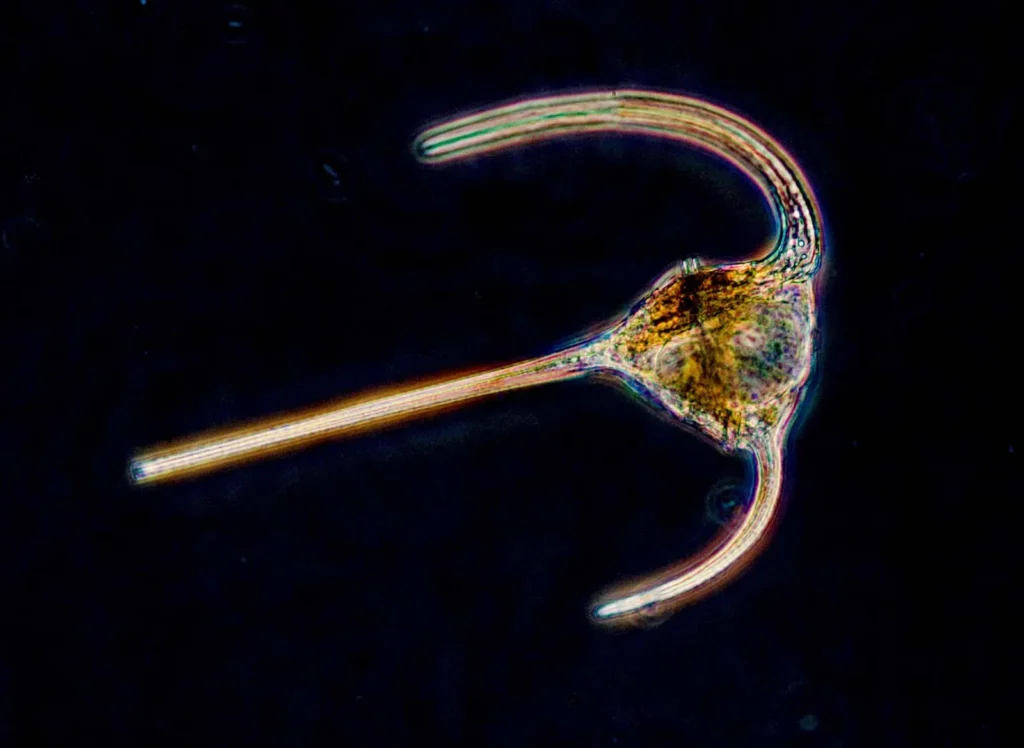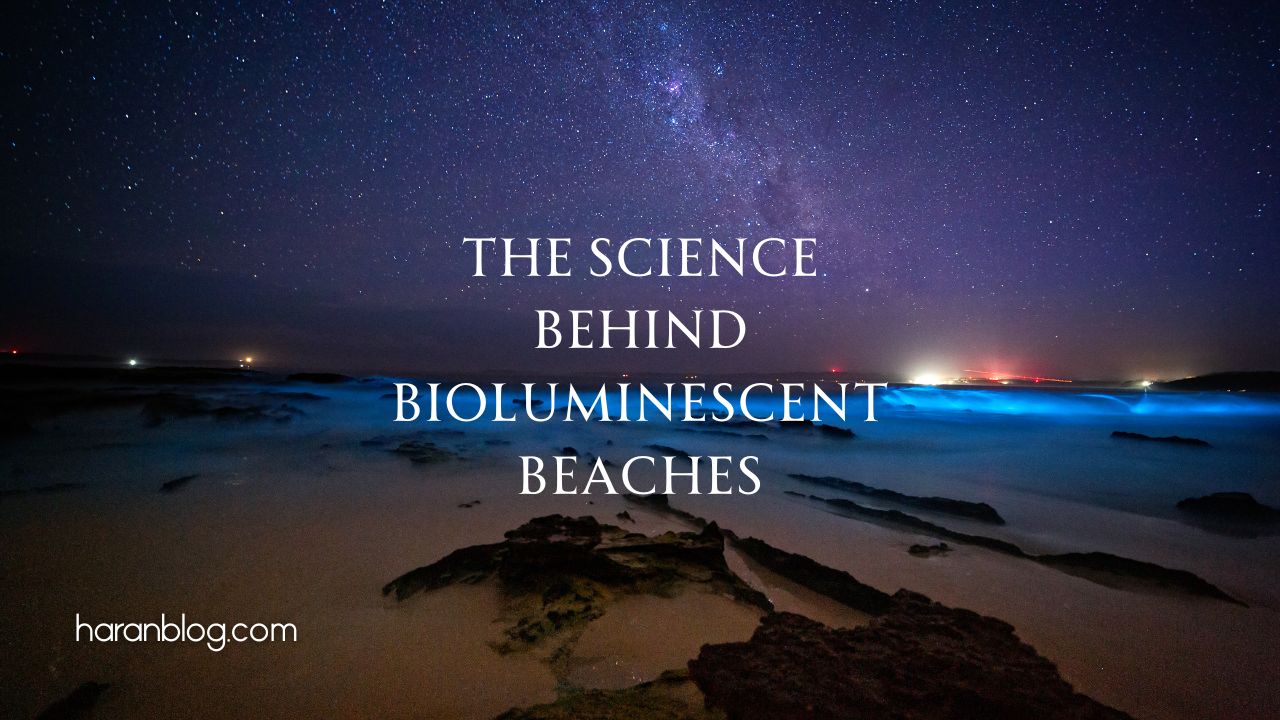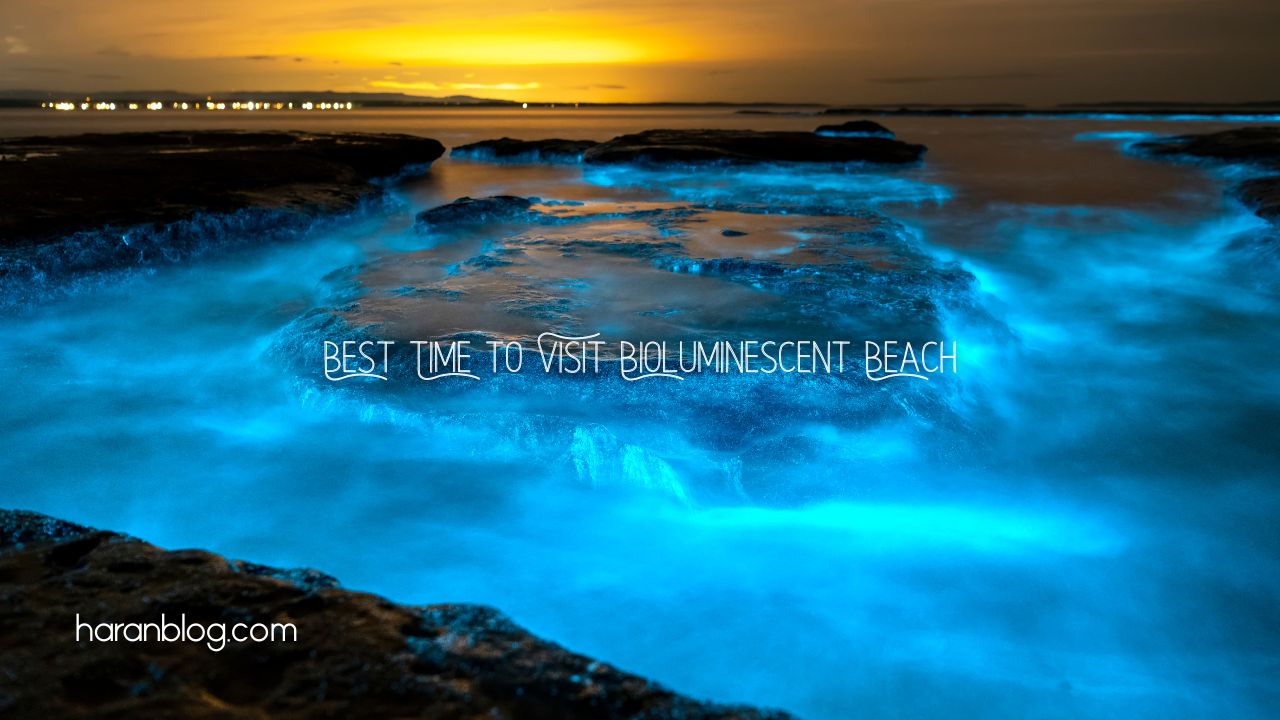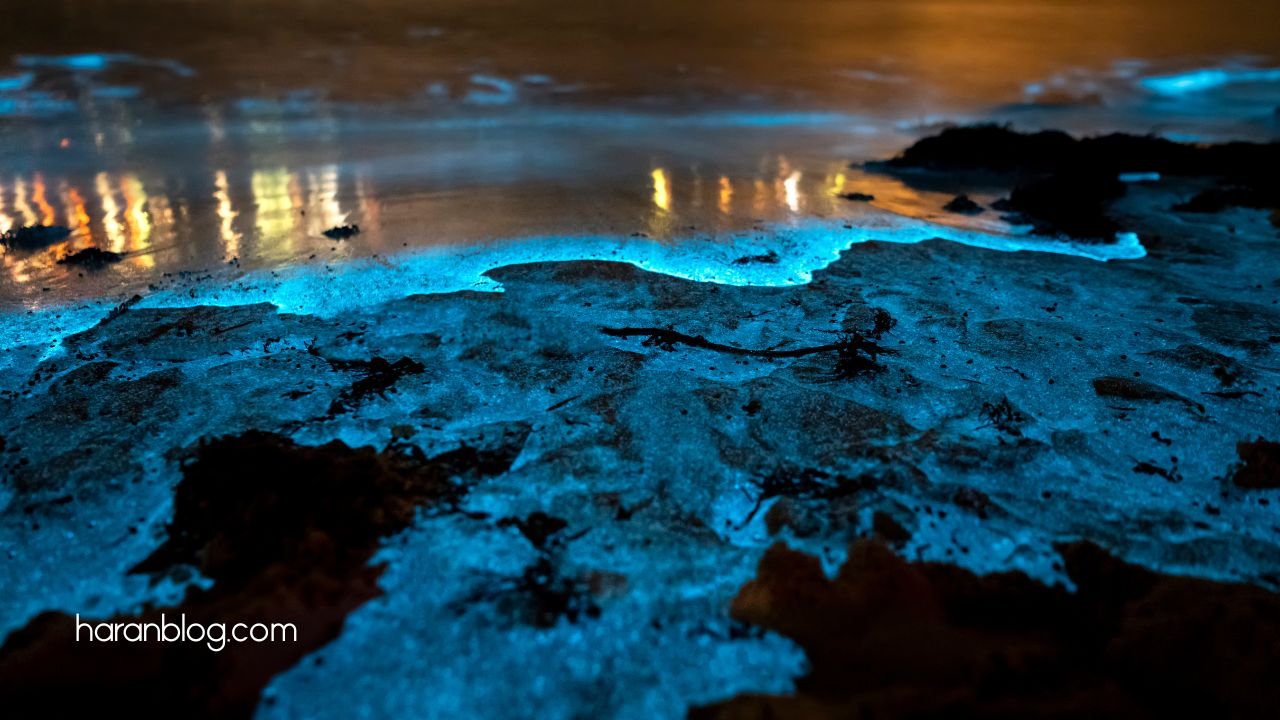One of the most impressive and wonderful happenings in nature are Bioluminescent beach. Imagine strolling down the coast, each step producing a brilliant trail in the sand and the waters glittering with an otherworldly blue or green light.
Bioluminescence, the capacity of living entities to generate light, is the source of this exquisite show. But just exactly and how does this amazing exhibition come about?
Let’s go further into the science of bioluminescent beaches and how these shining waters illuminate the evening.
What is Bioluminescence?
The synthesis and emission of light by some biological entities is the natural bioluminescence. Specialized cells or organelles carry a chemical reaction that generates the light.
This reaction calls for oxygen, other cofactors, luciferin—an enzyme called luciferase, and other cofactors. Light results from luciferin reacting with oxygen.
This phenomenon can occur in diverse creatures, from fireflies and jellyfish to fungi and deep-sea fish.
On bioluminescent beaches, the glowing light is typically caused by microscopic plankton—specifically dinoflagellates—that inhabit the water. When these small creatures are disturbed, they emit the mesmerizing visual effect that many beach visitors enjoy.
Dinoflagellates: Their Function in Bioluminescence

Dinoflagellates, single-celled plankton from the group of algae, are the principal offenders causing bioluminescent beach.
These plankton are known to generate light when they are stirred by movement in the water, such as when a wave crashes, a boat travels through, or a swimmer dives in. We call this response “bioluminescent flash.”
Dinoflagellates have evolved this ability to create light as a protective mechanism.
Predators can be startled by the abrupt flash of light, and occasionally it attracts bigger predators that feed on attackers of the dinoflagellates. This phenomenon keeps them out of reach for consumption.
The Chemical Reaction Behind the Glow
Inside the dinoflagellates, a chemical reaction produces the glow you find on bioluminescent beaches. It looks like this:
- Inside the dinoflagellates sits Luciferin, the molecule in charge of the glow.
- When the organism is agitated, it activates an enzyme called luciferase.
- In the presence of oxygen, this enzyme combines with luciferin to initiate the chemical reaction generating light.
This process is quite efficient, hence very little energy is lost as heat. A cool light results, which accentuates the glowing look even more.
Environmental Agents Affecting Bioluminescence
Although the dinoflagellates have natural glowing ability, several environmental elements can affect their frequency and strength. The following are some salient features influencing bioluminescence on beaches:
1. Water Temperature
Generally speaking, warm water temperatures cause dinoflagellates to be more active and to glow more brilliantly.
Tropical and subtropical beaches tend to be the greatest places to view bioluminescence since the warm waters stimulate the growth and activity of plankton.
2. Tidal Movements
Usually, tides set forth the most spectacular bioluminescence displays. More water movement brought about by higher tides agitates the plankton and generates their glow.
Usually, the greatest times to observe bioluminescence in full force are high tide or times when the water is moving quickly—like late evening or overnight.
3. Light Pollution
Dark environments allow one to completely appreciate the illuminating organisms by which bioluminescence is most evident.
Light pollution from surrounding cities or the moon can overwhelm the bioluminescent glow, therefore the best views of glowing beaches occur when the moon is in its new moon phase or when the beach is away from artificial lights.
4. Seasonal Variations
Some beaches could show more vivid bioluminescent displays in particular seasons. For example, in certain locations, bioluminescence is best during the warmer months, while others may experience the most vivid displays in fall or winter months.
Before deciding on your trip to view bioluminescence, it’s usually a smart idea to research peak seasons.
Other Living Things Affecting Bioluminescence
Although dinoflagellates are the most often occurring source of brilliant waters on bioluminescent beaches, they are not the only organism that generates bioluminescence.
Other marine life like jellyfish, firefly squids, and other species can also add to the water’s light in some areas.
At Toyama Bay in Japan, for instance, the light comes from glowing firefly squids meant to draw mates. Likewise, in locations such as Halong Bay in Vietnam, bioluminescence may be caused by brilliant jellyfish or some kind of algae.
The idea is still the same, though: these creatures create light by means of chemical reactions; so, ambient conditions affect the show.
The Specialness of Bioluminescent Beaches
Seeing a bioluminescent beach is a dream come true since it combines almost magical spectacle with the glory of nature. Anyone who views the water will be enthralled by its mystical mood created by its mild radiance.
The experience is unlike any other whether your activity is swimming among the brilliant waves, strolling down the shore and seeing your footprints light, or simply relaxing and appreciating the natural beauty all around.
Apart from creating a visual feast, bioluminescence offers insightful analysis of the fragile ecosystems supporting various species. Understanding the science behind bioluminescent beaches helps us to appreciate the intricacy of nature and the delicate habitats where these amazing species find home.
Ultimately
Bioluminescent beaches are a monument to the beauty and wonder of nature.
Understanding the science underlying the phenomenon—from the dinoflagellates causing the glow to the environmental elements affecting their intensity—helps one to appreciate the amazing light shows.
The science behind bioluminescent beaches adds still another level of wonder to an already amazing experience whether your visit is to see this spectacle personally or just curious about how brilliant waters illuminate the night.



